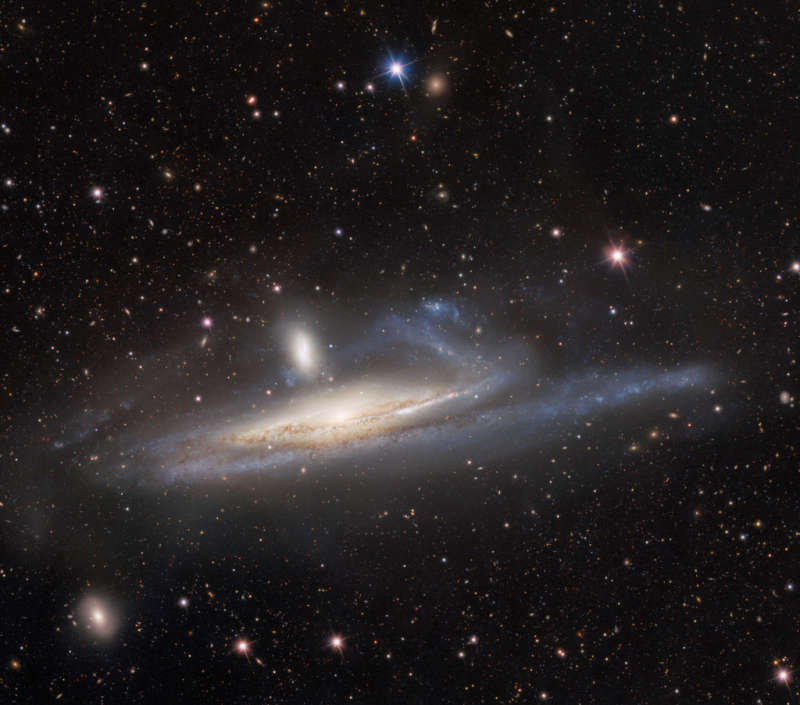
|
Credit & Copyright: CTIO/NOIRLab/DOE/NSF/AURA; R. Colombari, M. Zamani & D. de Martin
(NSF┴s NOIRLab)
Explanation:
Large galaxies grow by eating small ones.
Even our own galaxy engages in
a sort of galactic
cannibalism, absorbing small galaxies that are too close and
are captured by
the Milky Way's gravity.
In fact, the
practice is common
in the universe and illustrated by this striking pair of interacting
galaxies
from the banks of the southern constellation
Eridanus,
The River.
Located over 50 million light years away,
the large, distorted spiral NGC 1532 is seen
locked in a gravitational struggle with
dwarf galaxy NGC 1531,
a struggle the smaller galaxy will
eventually lose.
Seen nearly edge-on, spiral NGC 1532 spans about 100,000 light-years.
The merging galaxies are captured
in this sharp image from the
Dark Energy Camera mounted on the National Science Foundation┴s
Blanco 4-meter Telescope at Cerro Tololo Inter-American
Observatory in Chile.
The NGC 1532/1531 pair is thought to be similar
to the well-studied system of face-on spiral and small companion
known as M51.
|
January February March April May June July August September October November December |
| |||||||||||||||||||||||||||||||||||||||||||||||||||||||
NASA Web Site Statements, Warnings, and Disclaimers
NASA Official: Jay Norris. Specific rights apply.
A service of: LHEA at NASA / GSFC
& Michigan Tech. U.
Based on Astronomy Picture
Of the Day
Publications with keywords: interacting galaxies - merging galaxies
Publications with words: interacting galaxies - merging galaxies
See also:
- Galaxies in the River
- APOD: 2025 August 19 ┴ Giant Galaxies in Pavo
- APOD: 2025 June 1 ┴ UGC 1810: Wildly Interacting Galaxy from Hubble
- APOD: 2025 March 12 ┴ NGC 772: The Fiddlehead Galaxy
- Peculiar Galaxies of Arp 273
- APOD: 2025 January 6 ┴ Colliding Spiral Galaxies from Webb and Hubble
- Shell Galaxies in Pisces
